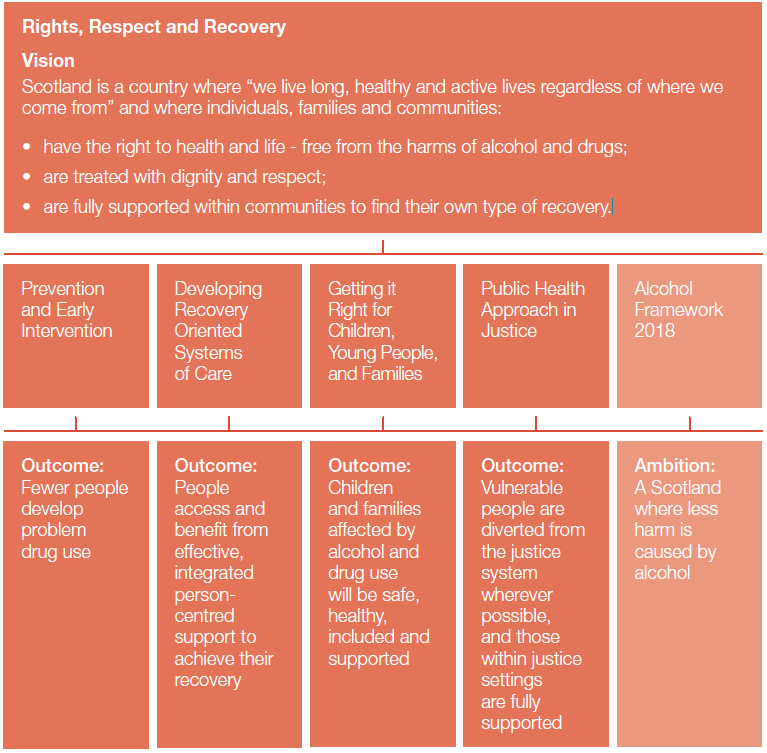Rights, respect and recovery: alcohol and drug treatment strategy
Scotland’s strategy to improve health by preventing and reducing alcohol and drug use, harm and related deaths.
Chapter 1: Vision
1. Scotland is a country where “we live long, healthy and active lives regardless of where we come from”[1] and where individuals, families and communities:
- have the right to health and life - free from the harms of alcohol and drugs;
- are treated with dignity and respect;
- are fully supported within communities to find their own type of recovery.
2. We will achieve this vision by delivering Scotland’s Public Health Priority to reduce the use of and harm from alcohol and drugs[2], with a particular focus on reducing alcohol and drug deaths.
3. Delivering this will involve:
- a focus on prevention which will reduce the individual, family and societal factors which increase the likelihood of alcohol and drug use and related harm;
- ensuring that actions to reduce use and harm are tackling health inequalities;
- a continuing whole-population approach to changing Scotland’s relationship with alcohol, aligned with the World Health Organisation’s “Best Buys”[3] for reducing the harmful use of alcohol;
- a Human Rights-based, person-centred response to individuals and families experiencing alcohol and drug related harm, ensuring a focus on those who are most at risk;
- a focus on taking an improved public health approach in justice settings - reducing use and harm - and taking vulnerable people out of the justice system;
- an evidence informed approach, which appropriately involves academic evidence, the voice of lived and living experience, family members, those with professional experience and other intelligence on alcohol and drug related harm and recovery; and
- clear arrangements for continuous improvement in delivery across the Scottish Government, Health Boards, Local Authorities, Police Scotland, the Scottish Prison Service, the Third Sector and other key organisations, particularly in working with local communities and recovery groups.

Contact
Email: William Doyle
There is a problem
Thanks for your feedback